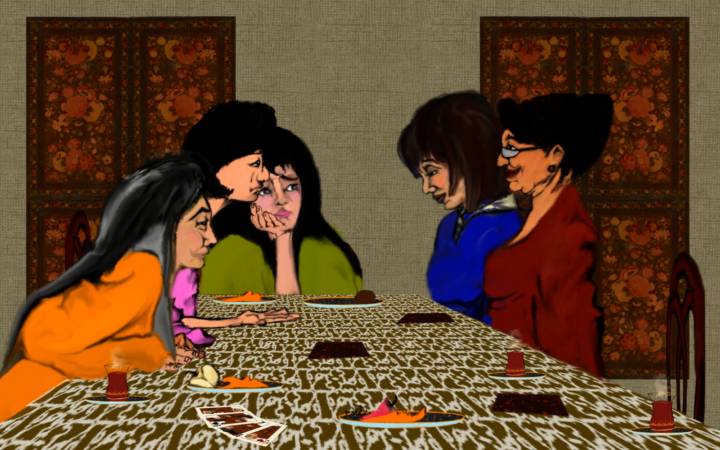Study sheds light on online groomers' methods
Posted Thursday 3 February 2011
 New research by Kingston University has shed light on the way sexual offenders select and groom their victims on the internet. The study, by experts from Kingston University and the National Centre for Social Research (NatCen), shows not all offenders behave in the same way, and that there are at least three distinct types of groomer. The findings, which were presented to experts onThursday 3 February, also highlights how young people behave online and how their actions could unwittingly attract sexual offenders.
New research by Kingston University has shed light on the way sexual offenders select and groom their victims on the internet. The study, by experts from Kingston University and the National Centre for Social Research (NatCen), shows not all offenders behave in the same way, and that there are at least three distinct types of groomer. The findings, which were presented to experts onThursday 3 February, also highlights how young people behave online and how their actions could unwittingly attract sexual offenders.
Known as the European Online Grooming Project, the research has been carried out by Professors Julia Davidson and Antonia Bifulco, from Kingston University, in partnership with NatCen and universities in Belgium, Italy and Norway. The findings present new challenges for social networking sites, the Metropolitan Police, government departments and leading children's charities. Early results show that there are at least three distinct types of groomer, which researchers have labelled "distorted attachment", "adaptable offender" and "hyper-sexual".
 Researchers argue that key to tackling the problem of online grooming is addressing the dis-inhibiting effect of the online environment on groomers and victims. "Young people need to be educated about what constitutes appropriate behaviour online, building on the work being done by the Child Exploitation and Online Protection Centre and Childnet," Professor Bifulco, a lead researcher in the project, said. "One of the concerning findings was the extent to which young people used sexual screen names and photos of themselves. They often didn't realise these were available across cyberspace and remained there for a long time acting as a magnet for groomers."
Researchers argue that key to tackling the problem of online grooming is addressing the dis-inhibiting effect of the online environment on groomers and victims. "Young people need to be educated about what constitutes appropriate behaviour online, building on the work being done by the Child Exploitation and Online Protection Centre and Childnet," Professor Bifulco, a lead researcher in the project, said. "One of the concerning findings was the extent to which young people used sexual screen names and photos of themselves. They often didn't realise these were available across cyberspace and remained there for a long time acting as a magnet for groomers."
The new evidence suggests even more needs to be done to help young people stay safe online. Professor Stephen Webster, lead researcher from NatCen, said: "The adoption by social networking sites of a panic button and the work being done to raise young people's awareness of online risk is excellent, but this research tells us that taking a 'one size fits all' approach is no longer enough. We want the launch of these findings to mark the start of a new phase in how we respond to this issue."
 Professor Davidson, fellow lead researcher on the project, added: "This is a growing public health problem, and we need co-operation between criminal justice services, internet providers and educators to work together to stem the proliferation of online grooming. The UK is leading the way but we need European-wide legislation because the internet has no geographical boundaries."
Professor Davidson, fellow lead researcher on the project, added: "This is a growing public health problem, and we need co-operation between criminal justice services, internet providers and educators to work together to stem the proliferation of online grooming. The UK is leading the way but we need European-wide legislation because the internet has no geographical boundaries."
The three types of online grooming behaviour identified in the study of offenders are:
"Distorted Attachment": This type of groomer thinks he is in a romantic and consenting relationship with the young person he is grooming. Contrary to traditional assumptions about online grooming behaviour, this style of offender in the sample did not use indecent images of children and didn't try to hide his identity. This type of groomer tends to spend a long time socialising with a young person online, getting to know them before arranging a meeting in real life.
"Adaptable Offender": This type of groomer can use lots of different identities online and adapts his style of grooming depending on the character, presentation and circumstances of the young person he is in contact with. He views the people he is grooming as sexually mature and may or may not use indecent images as part of the grooming process. He won't necessarily attempt to meet his victim in real life.
"Hyper-Sexual": This type of groomer is engaged in sharing and acquiring extensive numbers of indecent images of children. He will be in touch with other sexual offenders online, but tends to have little or no interest in meeting his victim in real life. This type of groomer will probably use different identities or a sexually explicit profile name and photo. The offending style of these groomers tends to be characterised by fast contact with the young person.
The researchers will now host workshops with young people, parents and teachers to develop recommendations for how education about online safety can be improved in light of the findings from the European Online Grooming Project.
- As part of the European Commission's Safer Internet Day on February 8, Kingston University's Centre for Abuse and Trauma Studies has devised some top tips to help children use the internet safely.
Contact us
General enquiries:
Journalists only:
- Communications team
Tel: +44 (0)20 8417 3034
Email us



